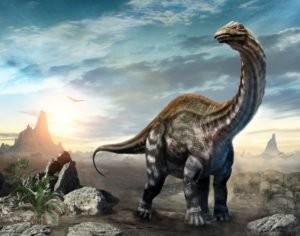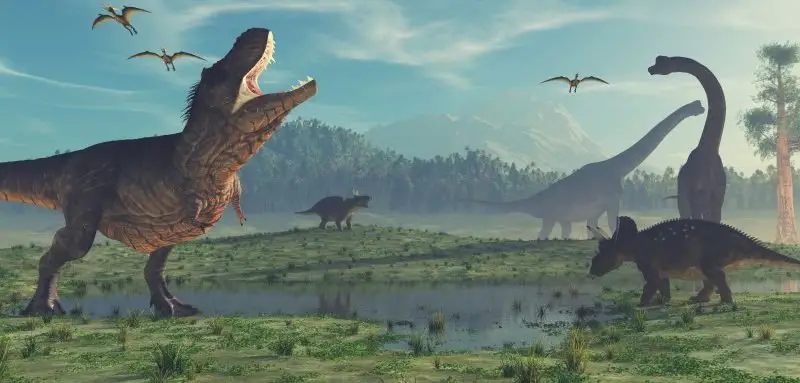Last modified on March 15th, 2022 at 8:43 am
8 Lesser-Known Dinosaur Species Worth Learning About
Dinosaur is the common name given to a group of large reptiles that first appeared about 245 million years ago. Studies reveal the different dinosaurs that once existed. While some gained popularity, several others were not widely known. This article contains a list of lesser-known dinosaurs that are worth studying.
- The Stegosaurus
The Stegosaurus measured up to 9 inches, weighing more than 5 tons. Its features are distinct from other dinosaurs, most apparent of which was the plates along its back. Aside from being aesthetic, these features served a purpose for their mating. Besides, the Steg was herbivorous, meaning it subsisted on plants. Due to its darling nature, it is featured in movies such as Jurassic Park. It’s recommended you read to learn more about it.
- The Elaphrosaur
The Elaphrosaur was a rare toothless dinosaur that lived about 110 million years ago. It was a light-footed lizard with an unusually long neck and short, stumpy arms. According to scientific studies, the dinosaur was delicately-built. Adult elaphrosaurs didn’t eat meat, and this was because their teeth had been replaced with a horny beak. Interestingly, young elaphrosaurs had teeth, unlike their adult form. The elaphrosaurs had some stature as it was recorded as 6.5ft long.
- The Oryctodromeus
The Oryctodromeus was an ornithopod weighing about 50-pounds and found in forest floors during the Cenozoic Era. These megafauna mammals were double the size of a badger or an armadillo. This species of dinosaurs did not have claws, but researchers speculate that they must have dug into forest flaws with their long pointy stout. Burrowing was a protective adaptive feature for Oryctodromeus. It burrowed forest floors to avoid becoming prey to larger predators within its ecosystem.

- The Qianzhousaurus
The Qianzhousaurus was a tyrannosaur with a long, pointed snout similar to a crocodile’s. Its physique makes it fall under a family called the Spinosaurus. Like many other Spinosaurus, the Qianzhousaurus inhabited rivers and fed on marine life. Their elongated snouts enabled them to survive in an aquatic habitat and hunt fish. This feature puts them in their unique class. The sizes of their snouts also had sexual implications. Males with bigger snouts enjoyed more mating attractions with females.
- The Guemesia
Guemesia was a meat-eating dinosaur that lived 70 million years ago. It had puny hands and often rammed its prey with its powerful head. The species likely belonged to a group of dinosaurs called abelisaurs, who were known to walk with two legs and possess stub-like arms. Due to its short arms, the Guemesia species had to rely on its powerful skull and jaws for grasping and hunting. This feature makes it uniquely different from other carnivorous dinosaurs. Scientists believed that abelisaurs roamed regions of the earth now in Africa, South America, and India. Several dozens of these species existed a few million years before an asteroid impact wiped out about three-quarters of earth’s species, including the dinosaurs.
- The Silutitan
This species of dinosaurs lived around 120 to 130 million years ago during the early Cretaceous period. They were a category of plant-eating dinosaurs with long necks and tails. Researchers estimate that the Silutitan species could have been over 70 feet long, giving it a size closer to that of the largest animal living on Earth today – the whale. Given its size, the long-necked and long-tailed dinosaur weighed around 40 tons.
- The Sauropods
Though some herbivorous dinosaurs existed, Sauropods were the first successful group of herbivorous dinosaurs. Their dominance of the terrestrial ecosystem spanned more than 140 million years. Sauropods had long necks and tails. However, their skull and brains were relatively small. They were about 130 feet long and weighed up to 14 times the weight of an African elephant. Their nostrils were located high up on their skull rather than the end of their stouts. Fossil records show that these nostril openings were very close to the eye openings. A member of the Sauropods is the Diplodocus which started diversifying in the middle Jurassic about 180 million years ago.
- The Spinosaurids
The Spinosaurids were huge carnivorous dinosaurs that most likely walked uprightly. They are the largest predator known, likely reaching lengths of 49-50 feet. They had massive, crocodile-like jaws that enabled them to eat fish and other dinosaurs. Most Spinosaurids lived during the medium to the late Cretaceous period. They were an adaptable and successful family of Theropods. Known species of Spinosaurids were bipedal, and some had small crests on the top of their head. All known Spinosaurids had robust shoulders, and their diets were composed of terrestrial and aquatic prey. A famous member of this group was Baryonyx walkeri, a species with large, captivating claws.
Conclusion
Paleontological studies and historical records have revealed how fascinating the study of dinosaurs can be. Though they’re evolution’s victims, these species of animals have remained objects of scientific research even to this day. Their unique features and lifestyles set them apart. While some species are widely known, others are relatively unknown yet worth studying.




